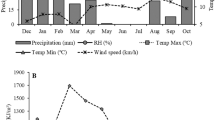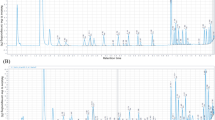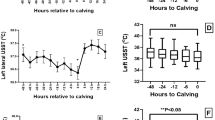Abstract
IT is well known that the coat has a marked insulative value, reducing the ability of the animal to dissipate heat to its environment. The reduction in the loss of heat occurs mainly in the conductive and convective components of loss1. The reduction in the potential loss of radiant heat may be of sizeable magnitude when the coat overlying the skin is thick and dense enough to prevent the skin from ‘seeing’ a cooler environment. There is the further possibility that the coat reduces the loss due to evaporation2.
This is a preview of subscription content, access via your institution
Access options
Subscribe to this journal
Receive 51 print issues and online access
$199.00 per year
only $3.90 per issue
Buy this article
- Purchase on Springer Link
- Instant access to full article PDF
Prices may be subject to local taxes which are calculated during checkout
Similar content being viewed by others
References
Hammel, H. T., Amer. J. Physiol., 182, 369 (1956).
Berman, A., Nature, 179, 1256 (1957).
Kibler, H. H., Brody, S., and Worstell, D. M., Mo. Agric. Exp. Sta. Res. Bull., 435 (1949).
Yeck, R. G., and Kibler, H. H., Mo. Agric. Exp. Sta. Res. Bull., 600 (1956).
Bligh, J., Nature, 176, 402 (1955).
Author information
Authors and Affiliations
Rights and permissions
About this article
Cite this article
BERMAN, A., KIBLER, H. Effect of Clipping the Coat on the Thermoregulatory Reactions of Dairy Heifers. Nature 183, 606–607 (1959). https://doi.org/10.1038/183606b0
Issue Date:
DOI: https://doi.org/10.1038/183606b0
This article is cited by
-
Heat tolerance in cattle-its concept, measurement and dependence on modifying factors
International Journal of Biometeorology (1961)
Comments
By submitting a comment you agree to abide by our Terms and Community Guidelines. If you find something abusive or that does not comply with our terms or guidelines please flag it as inappropriate.



